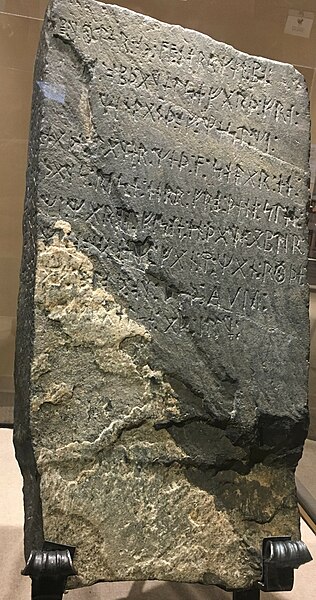L'Anse aux Meadows is an archaeological site, first excavated in the 1960s, of a Norse settlement dating to approximately 1,000 years ago. The site is located on the northernmost tip of the island of Newfoundland in the Canadian province of Newfoundland and Labrador near St. Anthony.
Recreated Norse buildings at L'Anse aux Meadows
A model depicting the Norse settlement established at L'Anse aux Meadows.
Anne Stine Ingstad at L'Anse aux Meadows, 1963. Ingstad, along with her husband, led an archeological excavation of the site.
The remains of Norse buildings on display. The remains of seven Norse buildings were uncovered during the Ingstads' excavation of the site.
Norse colonization of North America
The Norse exploration of North America began in the late 10th century, when Norsemen explored areas of the North Atlantic colonizing Greenland and creating a short term settlement near the northern tip of Newfoundland. This is known now as L'Anse aux Meadows where the remains of buildings were found in 1960 dating to approximately 1,000 years ago. This discovery helped reignite archaeological exploration for the Norse in the North Atlantic. This single settlement, located on the island of Newfoundland and not on the North American mainland, was abruptly abandoned.
Summer in the Greenland coast circa year 1000 by Jens Erik Carl Rasmussen (1841–1893)
A reconstruction of Norse buildings at the UNESCO listed L'Anse aux Meadows site in Newfoundland, Canada. Archaeological evidence demonstrates that iron working, carpentry, and boat repair were conducted at the site.
The Kensington Runestone on display in the Alexandria Chamber of Commerce and Runestone Museum.






